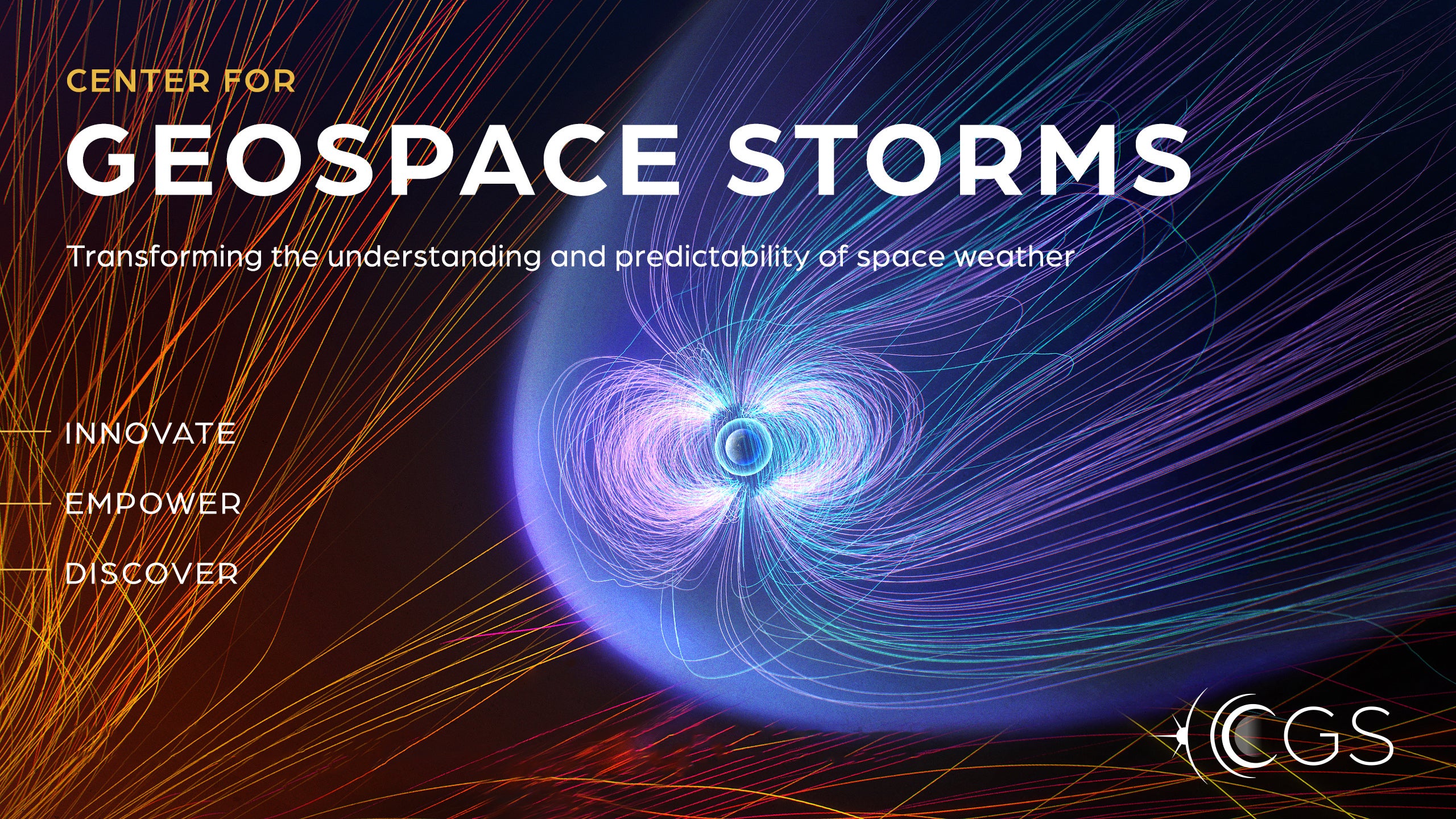NCAR partners to build first-ever comprehensive community geospace model
Center for Geospace Storms receives five years, $15M of additional funding from NASA
Apr 13, 2022 - by Laura Snider
Apr 13, 2022 - by Laura Snider

Center for Geospace Storms: Transforming the understanding and predictability of space weather. Image: APL
The National Center for Atmospheric Research (NCAR) is a leading partner in an effort to, for the first time, build a model that can simulate the entire near-Earth space environment, which stretches from the lower atmosphere out beyond the moon.
The resulting model, which will be open-source and available for community use, aims to transform scientists’ ability to model the impacts of space weather storms, which can disrupt radio communications, damage satellites, endanger astronauts, and down electrical grids.
The Multiscale Atmosphere-Geospace Environment (MAGE) model is the focus of the Center for Geospace Storms (CGS). The center was initially funded in 2020 as part of NASA’s Diversity, Realize, Integrate, Venture, Educate (DRIVE) initiative. It was one of nine DRIVE Science Centers that received two years of funding to demonstrate the value of their work. Last month, NASA announced that three of the centers, including CGS, were chosen to receive five more years of funding to complete their objectives. CGS will receive a total of $15 million.
CGS is led by the John Hopkins University Applied Physics Laboratory (APL) in partnership with NCAR, the University of New Hampshire, Rice University, Virginia Tech, the University of California Los Angeles, and Syntek Technologies. NCAR is sponsored by the U.S. National Science Foundation.
“MAGE is bringing a capability that we haven’t seen in the community before: the ability to discern smaller-scale features as well as placing them in a global context,” said NCAR scientist Mike Wiltberger, who serves as the deputy director of both CGS and NCAR’s High Altitude Observatory. “MAGE really pushes the boundaries of being able to do that.”
MAGE’s capabilities open the door for much more detailed regional predictions of how geospace storms may affect Earth. For example, Wiltberger has been experimenting with using the model to simulate how the effects of a particular geospace storm might propagate downward, impacting the electrical grid in some parts of the United States but not others. This could ultimately lead to much more useful forecasts for utility managers than current predictions that simply warn a storm is on its way toward the planet.
MAGE will knit together a number of existing models, including NCAR’s Whole Atmosphere Community Climate Model with thermosphere and ionosphere extension (WACCM-X). Beyond its expertise in geospace modeling, NCAR is also contributing its experience in community modeling and in optimizing modeling code for the next generation of supercomputers.